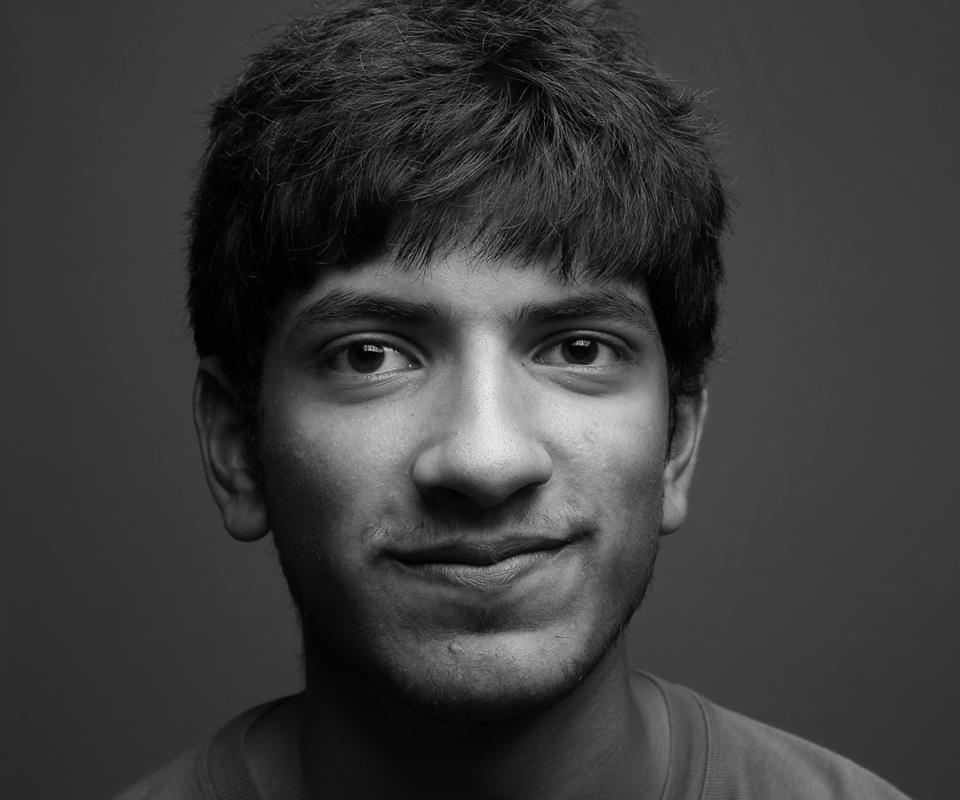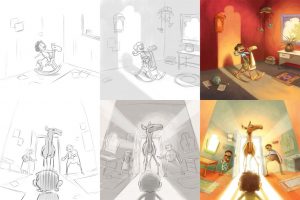
Quite a bit, actually. First of all, I didn’t know how to draw a camel at all. Besides the usual practice of studying images and sketching from them repeatedly, I bought a little model of a camel that I used for reference. It helped a lot with some of the more unique angles in the book (like the top angle used in the supermarket, for example).
discovers that the camel has been tired for a while. I needed the Meena’s realization in that moment to ring true without contradicting the happy shenanigans in the previous pages.
A. H. Benjamin’s text was very sparse in terms of details and tone, and though that demands a lot more thought from an illustrator, it’s ultimately a gift for an illustrator–you can bring that much more to the book yourself. Every illustration is full of little details and reactions and flourishes that had no source in the text, simply because the text was so beautifully taut.
As for a specific example of an element I added… there were little things, like the idea that Meena is an artist. I’ve hidden her drawings of camels here and there in the book, and eagle eyed readers might notice that she actually gets better at drawing as she ages, as one does.
Another element I was particular about adding was some company for the camel at the shelter, at the end. I didn’t want her to go off to a shelter while Meena went back to her family – I needed young readers to know that the camel too had people of her own to be with.
I believe you could give this particular text to five different illustrators and come out with five very unique books. I decided to go with something absurd and over the top, because my first reading of the text made me laugh out loud several times.






